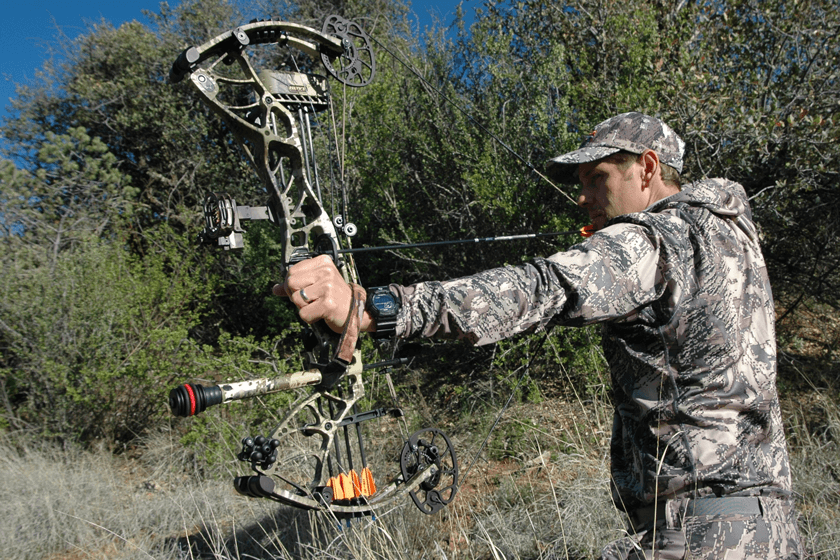To bare shaft tune your bow, follow these steps: adjust the brace height, nocking point, and arrow rest position. Bare shaft tuning is an important process in archery that involves adjusting the components of your bow to achieve optimal arrow flight.
By fine-tuning the brace height, nocking point, and arrow rest position, you can ensure that your arrow flies true and hits the target consistently. We will break down the steps to bare shaft tune your bow, giving you the knowledge and confidence to make the necessary adjustments.
So, let’s dive in and explore the world of bare shaft tuning to improve your archery accuracy.

Credit: www.youtube.com
Understanding Bare Shaft Tuning
Bare shaft tuning is a crucial aspect of bow tuning for archers. The process involves shooting arrows without fletching to assess the accuracy of the bow’s alignment. By examining how the bare shafts behave compared to the fletched arrows, an archer can make adjustments to improve the bow’s performance.
The benefits of bare shaft tuning are manifold. Firstly, it helps identify any inconsistencies in arrow flight, allowing for fine-tuning of the bow’s setup. Secondly, this tuning method aids in achieving better arrow grouping and increased accuracy. Furthermore, bare shaft tuning provides insights into arrow spine, helping archers select the appropriate arrows for their bow setup.
By dedicating time and effort to bare shaft tuning, archers can optimize their equipment and enhance their shooting skills. So, whether you’re a beginner or an experienced archer, mastering bare shaft tuning can significantly improve your overall shooting performance.
Step-By-Step Guide To Bare Shaft Tuning
Bare shaft tuning your bow involves gathering the necessary equipment, preparing the bow for tuning, shooting the bare shaft, analyzing the arrow flight, adjusting the bow for optimal tune, and repeating the process for accuracy.
Troubleshooting Common Bare Shaft Tuning Issues
Troubleshooting common bare shaft tuning issues can help improve the performance of your bow. One common issue is arrow fishtailing, where the arrow wobbles in flight. To fix this, you may need to adjust your bow’s cam timing or spine stiffness of your arrows.
Another issue is arrow porpoising, where the arrow moves up and down during flight. This can be caused by an inconsistent release or arrow spine that is too stiff. Arrow tail kick, where the back of the arrow kicks out, can be resolved by adjusting the knock point height or adding weight to the front of the arrow.
Lastly, arrow nock high or low can be corrected by adjusting the brace height or rest height on your bow. Keep in mind that individual bow setups may require specific adjustments. Regularly tuning and troubleshooting can help optimize your bow’s performance.
Frequently Asked Questions Of How To Bare Shaft Tune Your Bow?
How Often Should I Bare Shaft Tune My Bow?
Bare shaft tuning your bow should be done periodically to ensure consistent accuracy with your arrows.
What Equipment Do I Need To Bare Shaft Tune My Bow?
To bare shaft tune your bow, you’ll need a bare shaft arrow, a fletched arrow, and a consistent shooting environment.
How Does Bare Shaft Tuning Improve Accuracy?
Bare shaft tuning allows you to identify and correct any inconsistencies in your arrow flight, resulting in improved accuracy and tighter groupings.
What Steps Should I Follow To Bare Shaft Tune My Bow?
To bare shaft tune your bow, start by shooting a group of fletched arrows, then shoot a group of bare shaft arrows, and make adjustments accordingly to achieve optimal arrow flight.
Conclusion
To ensure optimal accuracy and performance, bare shaft tuning is a crucial step for any bow enthusiast. By meticulously fine-tuning the arrows to match the bow’s setup, you can achieve impeccable consistency and precision with every shot. Throughout this guide, we have walked you through the necessary steps to execute a bare shaft tune successfully.
From measuring your arrow’s spine to adjusting the rest and nocking point, each component plays a vital role in fine-tuning your bow. Remember to maintain patience and take your time during this process, as even minor adjustments can make a world of difference.
By following these practices and implementing the techniques discussed, you will undoubtedly improve your accuracy and overall archery experience. So, grab your bow, arrows, and a bit of patience, and embark on the exciting journey of mastering the art of bare shaft tuning.

General Manager & Auditorial Head.
Killian Jake is a World Sports Traveler and hobbyist sports lover. By exploring different sorts of playing modules like indoor, outdoor, and many more. As for professionalism and writing, it’s helpful to give you the right suggestions on different games and sports.




